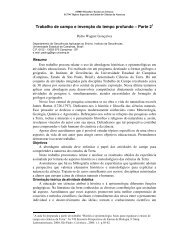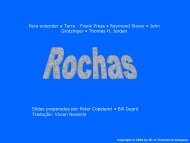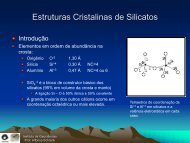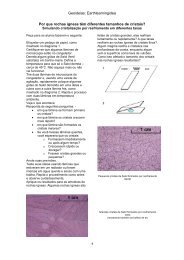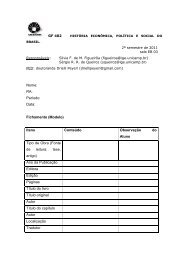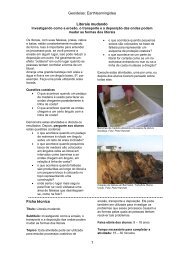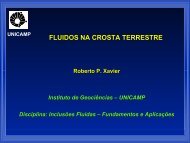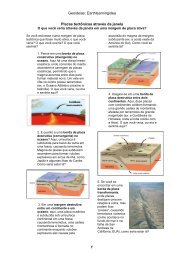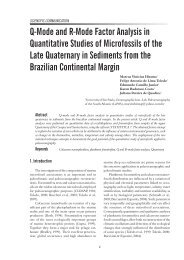ASTER User Handbook
ASTER User Handbook
ASTER User Handbook
You also want an ePaper? Increase the reach of your titles
YUMPU automatically turns print PDFs into web optimized ePapers that Google loves.
<strong>ASTER</strong> <strong>User</strong>s <strong>Handbook</strong><br />
Figure 3: VNIR Subsystem Design.<br />
2.2 The SWIR Instrument<br />
The SWIR subsystem uses a single aspheric refracting telescope (Figure 4). The detector in each<br />
of the six bands is a Platinum Silicide-Silicon (PtSi-Si) Schottky barrier linear array cooled to<br />
80K. A split Stirling cycle cryocooler with opposed compressors and an active balancer to<br />
compensate for the expander displacer provide cooling. The on-orbit design life of this cooler is<br />
50,000 hours. Although <strong>ASTER</strong> operates with a low duty cycle (8% average data collection<br />
time), the cryocooler operates continuously because the cool-down and stabilization time is long.<br />
No cyrocooler has yet demonstrated this length of performance, and the development of this<br />
long-life cooler was one of several major technical challenges faced by the <strong>ASTER</strong> team.<br />
The cryocooler is a major source of heat. Because the cooler is attached to the SWIR telescope,<br />
which must be free to move to provide cross-track pointing, this heat cannot be removed using a<br />
platform provided cold plate. This heat is transferred to a local radiator attached to the cooler<br />
compressor and radiated into space.<br />
Six optical bandpass filters are used to provide spectral separation. No prisms or dichroic<br />
elements are used for this purpose. A calibration device similar to that used for the VNIR<br />
subsystem is used for in-flight calibration. The exception is that the SWIR subsystem has only<br />
one such device.<br />
10



